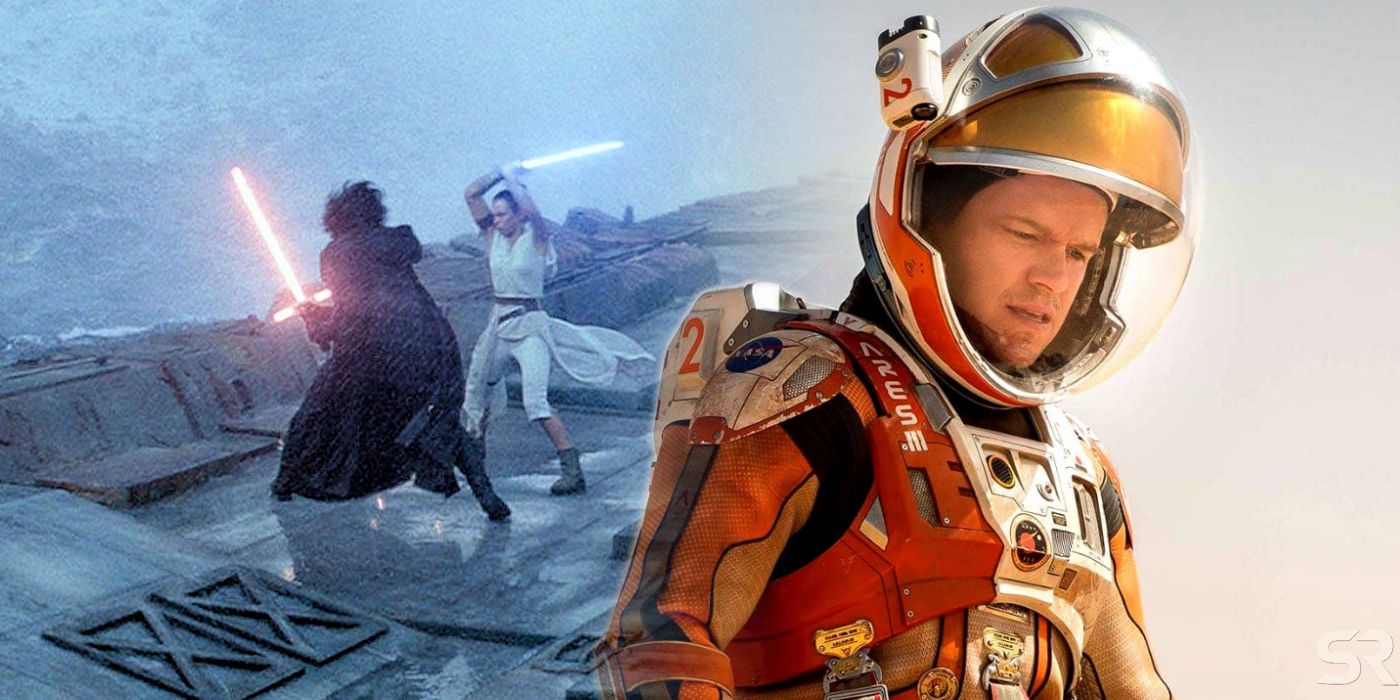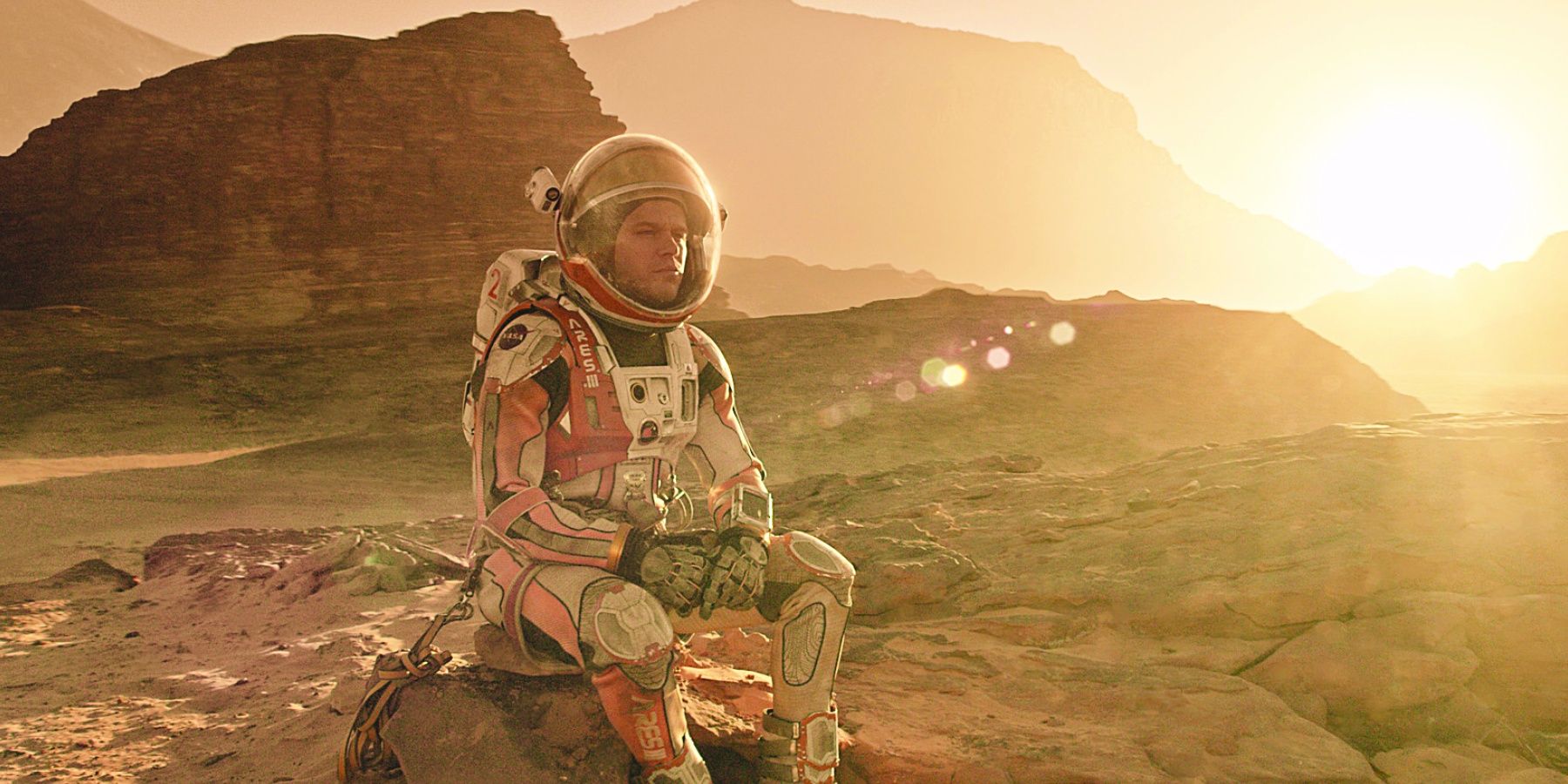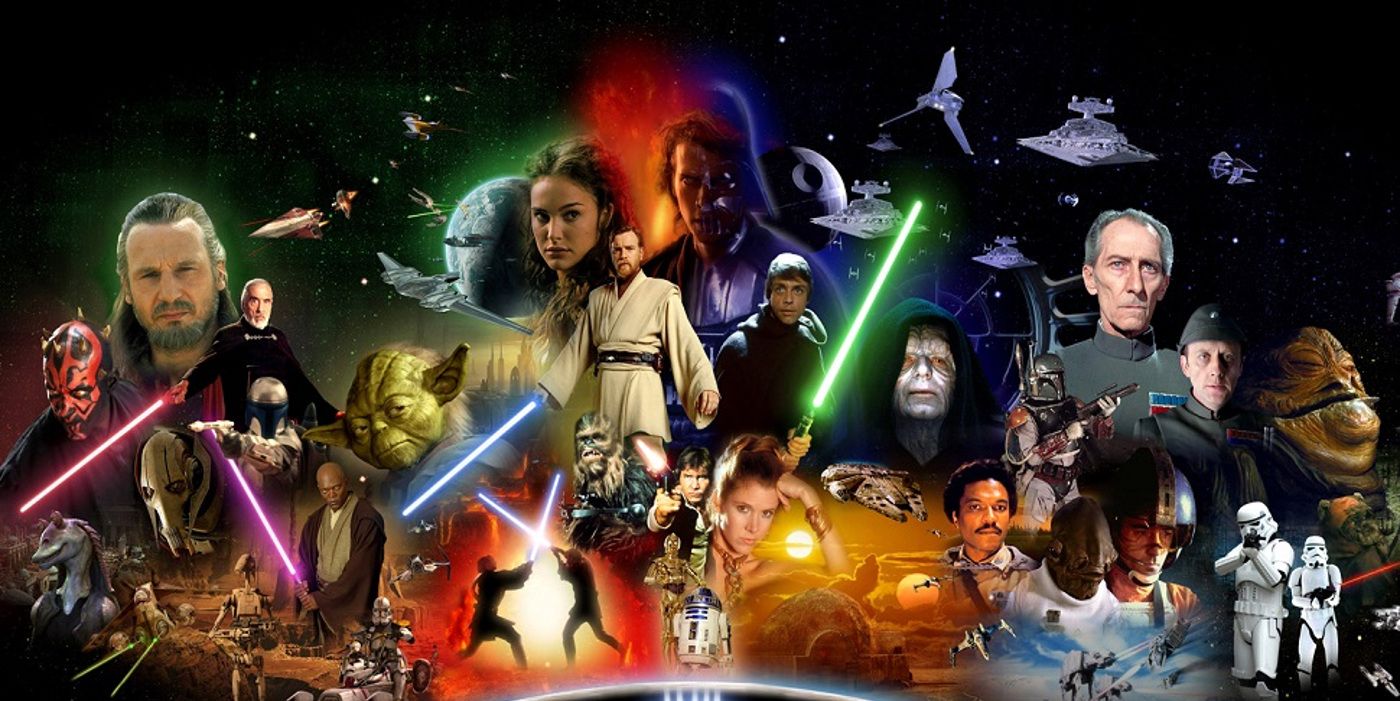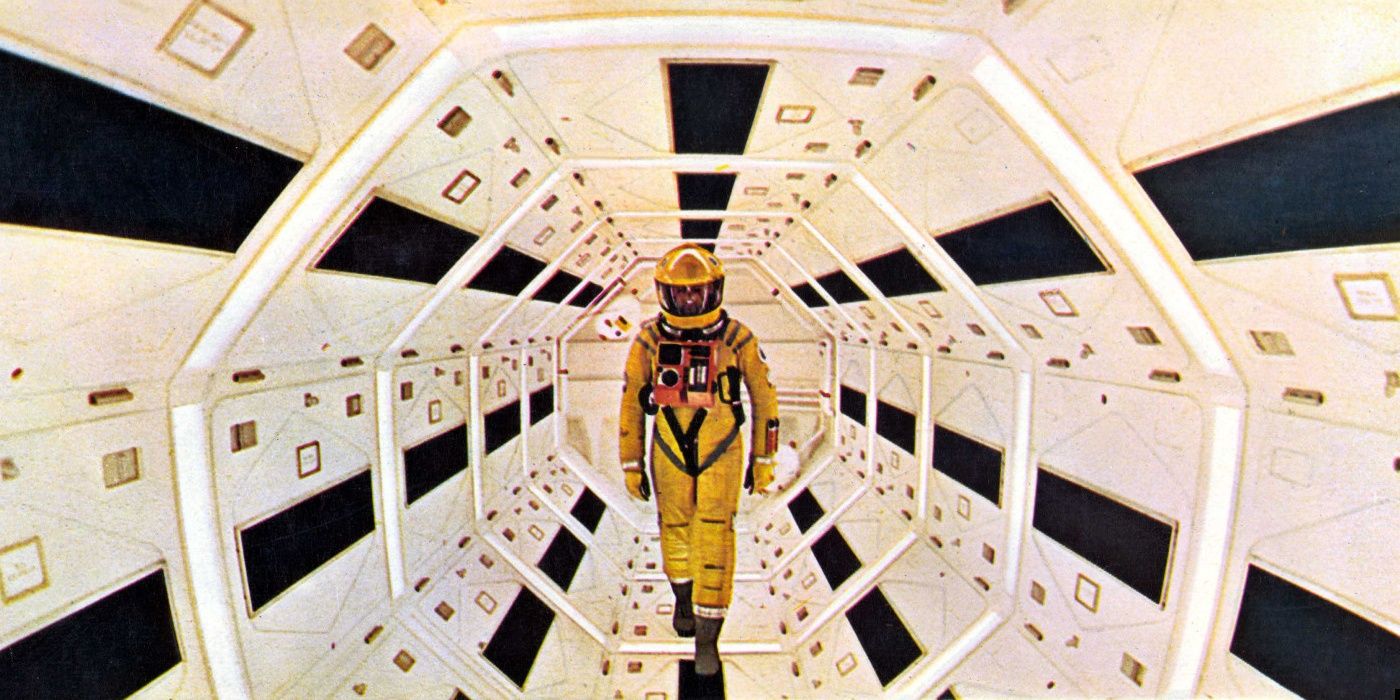In the world of science fiction cinema, you can find everything from Star Wars to Annihilation across two categories of sci-fi storytelling known as hard sci-fi and soft-sci-fi. Though these two terms were originally coined in the 1950s as ways of categorizing literature, they've managed to be as useful expressions for cinematic discourse. The category of hard sci-fi pertains to science fiction tales that are more grounded in reality with science that either exists or could conceivably exist in the near future. Hard sci-fi takes what could be stylized and roots it in reality. Even the robots that appear in movies (HAL in 2001: A Space Odyssey or TARS in Interstellar) are designed and written to very clearly be machines rather than anthropomorphized mechanical beings.
That latter type of robot tends to appear frequently in soft sci-fi, which is filled with stories that explore this genre through a more fantastical lens. Soft sci-fi is where the shackles of reality are thrown off and imagination is allowed to run rampant since any hope of scientific accuracy has been abandoned. It's no surprise that science fiction cinema can now be divided into two groups considering just how expansive it has become. After all, sci-fi movies dates all the way back to the days of George Melies and A Trip To The Moon in 1902. In the nearly 120 years since that film's release, sci-fi and cinema have become an inseparable pair that has produced an extensive catalog of titles rife with the sort of variety that cannot fit under a singular descriptor.
While it's certain that not all sci-fi movies belong under the same moniker, far more disputable is the question over which makes for better movies overall, hard sci-fi or soft sci-fi? Is one of these storytelling methods inherently superior to the other? To explore a concrete answer (if one even exists) to that question, it's important to first break down the virtues of each of these sci-fi forms so that a more specific picture can be painted over what each strain of sci-fi cinema brings to the table.
What Makes A Movie Hard Sci-Fi
Hard sci-fi isn't quite as common in cinema as it is in literature, given that film studios tend to prefer making sci-fi stories in the more commercial appealing avenue of soft sci-fi. However, there are still plenty of examples of hard sci-fi movies, including 2001: A Space Odyssey. For a more modern example of what hard sci-fi is, one can turn to Ridley Scott's The Martian. This movie also serves as a great example for what unique virtues the hard sci-fi storytelling approach possesses. The Martian is a story all about Matt Damon's Mark Watney being stranded on Mars and having to survive by his wits; he can't turn to the aid of exceedingly unrealistic sci-fi elements like laser guns or fleets of spaceships to solve his problems.
Instead, the intellect that made him such a good astronaut in the first place aids him in figuring out ways to survive on Mars. Such survival techniques are, like the rest of the story, directly rooted in actual science. Even a climax involving the protagonist having to fly through space to reach a rescue ship doesn't make use of a jetpack. Instead, he's using air leaking out of his suit to propel himself upwards. Utilizing the sort of heightened science fiction elements associated with soft sci-fi would have undermined the sparse lack of resources that drive so much of the tension in The Martian. The focus in this movie is on using realistic science to make it more believable, rather than allowing it to be completely fictitious. That aspect is integral to hard sci-fi movies. Specifically, these movies use the inherently restrained nature of hard sci-fi storytelling as a way to provide a greater level of focus on characters and themes.
These two elements can get lost in the spectacle-driven shuffle of soft sci-fi, but they provide the core foundation for much of hard sci-fi. One of the many benefits of producing hard sci-fi movies is that those productions tend to lend themselves to smaller budgets, considering they don't have to develop expansive, VFX-driven spectacles, like space battles, fictional creatures, and more. However, the grounded nature interwoven into hard sci-fi means those stories are far more manageable to execute on a restrictive budget. The likes of Duncan Jones and Alex Garland were able to create debut directorial works like Moon and Ex Machina, respectively, that fully inhabited the budget-conscious yet thematically deep realm of hard sci-fi.
What Makes A Movie Soft Sci-Fi
On the opposite end of the spectrum is soft sci-fi, which has a less realistic approach to sci-fi storytelling and has become an ideal format for escapist entertainment. When people turn to film for an escape from routine life, what better genre to turn to than soft sci-fi, which is all about eschewing science and recognizable reality? Pre-1950s movies like Flash Gordon and Buck Rogers have ensured that what the industry would eventually call soft sci-fi has always been a prominent fixture of filmmaking. However, soft sci-fi leaped to a whole new level of popularity when Star Wars released in 1977. All kinds of imaginative, cosmic wizardry was brought to life with unprecedented levels of polished visual effects and production design.
Those visual-based qualities of Star Wars point to one of the best parts of the greatest pieces of soft sci-fi storytelling. Specifically, these movies have the capability to produce stunning imagery and immersive worlds. They may not be beholden to reality, but that doesn't mean they can't create a new, believable reality. Just look at 2009's Avatar for a modern example of how soft sci-fi can submerge audiences in a cornucopia of otherworldly eye candy. Audiences around the world went to see this movie countless times in theaters thanks to the way James Cameron and company were able to make an unbelievable alien planet feel like something they could walk into. These kinds of accomplishments are achievable because soft sci-fi movies usually have more cash to burn. Whereas hard sci-fi works are usually told through smaller-scale or independently-financed means, soft sci-fi stories tend to have the expensive backing of major studios. With all that money at their disposal, soft sci-fi stories have the ability to utilize cutting-edge visual effects that can create worlds so rich in detail that audiences can lose themselves in.
While soft sci-fi is usually more concerned with providing distinct spectacle rather than exploring loftier thematic ambitions that mark many pieces of hard sci-fi storytelling, that doesn't mean soft sci-fi is entirely devoid of thoughtful storytelling. On the contrary, some of the most revered pieces of soft sci-fi cinema have resonated with audiences deeply because of their themes and characters. Take Spider-Man: Into the Spider-Verse, for example. This animated movie uses all kinds of unrealistic sci-fi elements, like alternate dimension transporters and spider-powered superheroes. However, these aspects of its story are used in service of an intimate coming-of-age story, one that explores the urgent concept that anyone with any kind of unique personality can make a difference in the world. In a film like that, soft sci-fi uses the fantastical to deeply explore characters rather than push them aside to make room for spectacle.
Are Hard Sci-Fi Or Soft Sci-Fi Movies Better?
In truth, determining hard sci-fi versus soft sci-fi comes down to a bit of a tie in that both are the superior approach to science fiction filmmaking, but only on a case-by-case basis. The world of science fiction is dense; there are thousands of movies in existence and not all of them require the same approach. One cannot imagine the world of Star Wars being enhanced by the traits that define hard sci-fi. Such traits would dismantle the joyful escapism that serves as the crux of the best Star Wars adventures. The same can be said for other iconic pieces of modern-day soft sci-fi cinema, like Guardians of the Galaxy and Edge of Tomorrow.
A similar sentiment can be expressed for hard sci-fi cinema. The stories told in this format just wouldn't work properly when accompanied by the sort of heightened elements that populate soft sci-fi storytelling. Films in this realm aren't devoid of deviations into more outlandish material, as seen by the famous ending of 2001: A Space Odyssey that takes the lead character on a transformative journey through the stars. However, for the most part, films occupying the terrain of hard sci-fi work with storytelling that keeps at least one foot firmly in reality.
Clearly, hard sci-fi and soft sci-fi are vastly different in many respects, and the unique attributes of each approach are well-suited for certain types of stories. However, despite all those differences, these two styles do share one common element. Specifically, the best examples of both of these outlooks use science fiction storytelling to tell stories that resonate with viewers on a personal level. Whether it's hard sci-fi using an intimate scope to staggeringly impressive effect in 2001: A Space Odyssey or soft sci-fi employing endless creativity to create emotionally powerful storytelling in Spider-Man: Into the Spider-Verse, both approaches are capable of unearthing the deeply human within the confines of science fiction.




